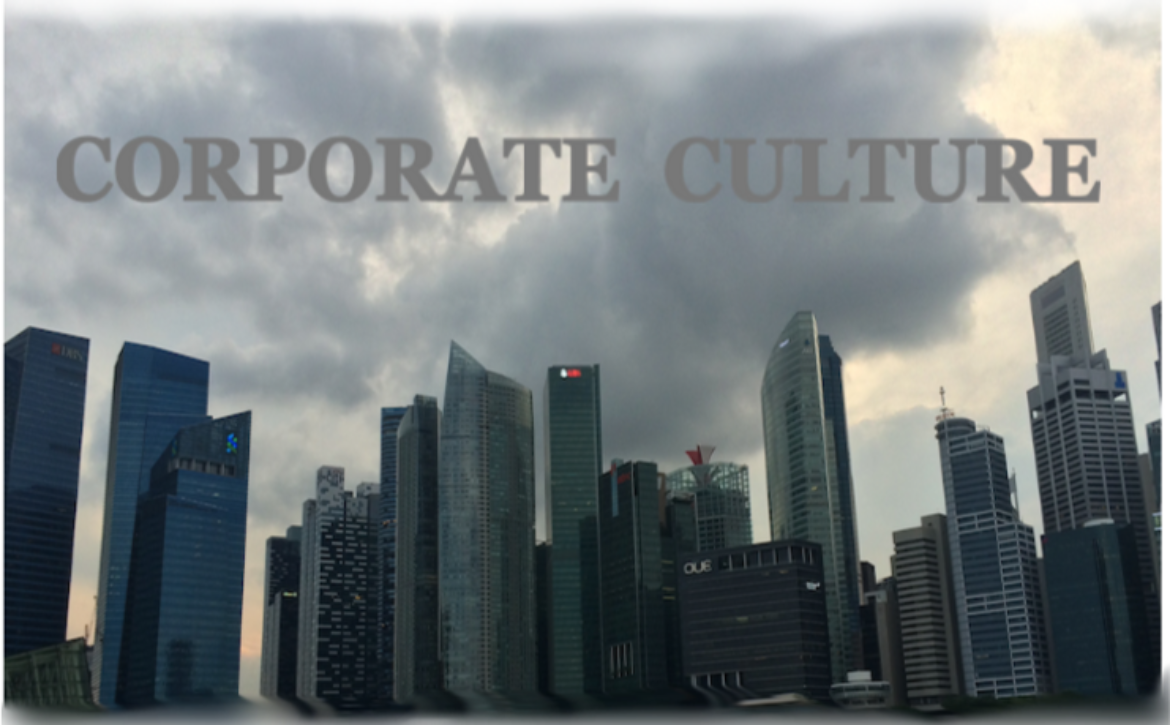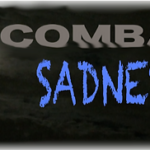
265 Views
Corporate Culture: Convert it to Autopilot for success
Corporate culture a much spoken and a lesser understood phenomenon, described as an abstraction comprising of vague, intangible, unwritten rules, that develops ‘anyhow’ has the CAPABILITY to DRIVE or DOOM a business! Let’s go on an exploration drive to see how we can use Corporate Culture to ride business journey to success in Autopilot mode.
Are you living in denial?
In an age where time is more valuable than money (after all, your opportunity cost could include being with loved ones, going to an exotic holiday destination, buying stocks, Facebooking…) when information is only a click, tab, phone, watch or whatever your favorite gazette is…away. Do you have the time, the need, and the energy to now worry about developing the right CULTURE! After all, what are those ‘Standard Operating Procedures (SOPs),’ employment contracts’, ‘Manuals’, checklists that were spent months and thousands formulating, for? We are paid to be managers not some ‘behavior therapists’ after all!!!
Above are very valid arguments! If everyone does the job as per the role and scope of work, according to the procedures deliberated, where is the need to spend time and energy on developing a culture – wouldn’t it evolve and exist, ANYHOW?
Points to ponder Culture, would develop ANYHOW, but the CHALLENGE is whether it develops as a debilitating OR a driving force?
– Whether it creates roadblocks OR facilitates efficient the functioning of the organization.
– Whether it encourages innovative thinking OR the thoughts are nibbled much before they blossom into a plan.
– Whether it promotes blame-game OR spirit of accountability and camaraderie.
– Whether it signals to employees that it’s important to spend more time in the office OR to be more productive in the office.
– Whether it is important to flatter the boss and pass on work to someone else OR is it important to stay focused and to raise alarm challenging status quo if required.
– Whether change and new ideas are welcomed OR resisted.
– Whether employees look forward to another exciting day at work OR sulk at the thought of going again to work and are looking for another job opportunity.
Organizational CULTURE determines HOW things are done, ‘WHAT’ is important and what can be ignored or delayed. Speed, accountability, trust, team spirit, etcetera, all evolve from a culture!
What personality, character, traits, values are to a person – a culture is to an organization.
The metaphorical iceberg well explicates the phenomenon. Visible ‘actions and outcomes’ have their basis in the deeply enrooted, invisible iceberg comprising of beliefs, values, attitudes that frame our thoughts and actions, which in turn are shaped by our perception of people, surroundings and situations; triggered by our emotions; and developed by our emotional intelligence (ability to understand and manage self and others) that mobilizes and energizes us to sustain and drive an activity. Likewise, stories about past, unwritten rules, power politics, group polarization, internal communication, conflict resolution techniques, reward system, leadership style, frame and shape common beliefs, shared assumptions and value systems that drive the Corporate Culture.
Edgar Schein and other management theorists describe Corporate Culture as an abstraction. Since it is an abstraction, it is difficult to limit it in a defined theoretical framework of does and don’ts. Perhaps it is the reason, why many leaders do not give the due attention Culture deserves. Dr Schien quoted that “the forces that are created in social organizational situations that derive from culture are powerful. If we don’t understand the operation of these forces, we become victim to them.” Thus, for an organization to thrive, it should have “the right kind of culture” that is appropriate to “the kind of business” the organization is engaged in.
Identifying a dysfunctional culture
Since culture is essentially implicit, unspoken and unwritten – to identify the deterrents existing in the culture – It is important to QUESTION the ‘belief systems’, ‘values’ and ‘assumptions’ that are ‘NOT IN SYNC’ with the corporate vision and goals. It is not as easy as it sounds, as the beliefs have history down the memory lane, starting from the incorporation of the organization, conveyed from one generation to the other (could be a year long, keeping in mind the quick turn over these days), in the form of stories (and we all know about Chinese Whispers Game). Cultural assessments can provide measurable data about the real organizational values and norms that can be used. Interviews and surveys are some of the ways as well. However, to begin with, self-observation is a good idea, especially since culture is self demonstrative – it is shared by everyone in the organization, it is the character of an organization, it reflects how things are done, what is encouraged and given importance to – it is silent but omnipresent. A trained eye, nevertheless, would be beneficial. However, some tip-offs are as below.
Red Flags that shouldn’t be ignored:
1.High employee turnover – Employees are ready to jump ship at first given opportunity! Considering the cost of recruiting, and training, talent loss, not just a huge financial drain, raises the question -‘what’s going on?
2. Do as I say style of management – This is tried and tested, and this is the only way things are done here. Out goes ‘your problems’ ‘ your issues’ & ‘your suggestions’. Definitely no room for whistleblowers!
3. More internal, than external competition – I’m better than anyone here! Everyone is on a look out for his/her slice of pie, to earn extra brownie points in terms of attention and recognition. Self is more important than team, and personal agenda’s take priority over corporate goals.
4. Information hoarding – Employees hold on to information instead of sharing actively in order to gain importance, stay significantly relevant and become expensively irreplaceable.
5. The Blame Game – Lack of accountability, covering mistakes, no support to others. The focus is on ‘passing the buck’, ‘put the blame’ & not ‘fixing the issues’.
6. No room for mistakes – Zero tolerance for errors, risk takers strictly penalized. Forget about creative solutions and innovation.
7. Cubicle mongers – Meeting others is a waste of time. It’s only my work & me. Knowledge sharing, bond building, supporting each other, is strictly no!
8. Power Politics – Join the gang or bear the repercussions, compliance and adherence to one of the power groups is a necessary skill for survival.
9. No time to smile – People are unhappy and it shows!
10 .Over contentment with status quo – Either too perfect or too rigid. Find out? After all, isn’t ‘Change’ most stable ‘constant’ these days!
Turning culture to competitive advantage
Now that’s the real challenge! But it is DOABLE! Here’s HOW…
1. Clear alignment between policy creation and implementation- Beliefs and values that are key to achieving an organization’s objectives must be consistent with actual policies and the practices. Misalignment between advocated values and actual practices create skepticism about ‘said and implied’, ‘asked and expected’. And such doubts may lead employees to think if they can possibly use the same approach to their ‘personal accountability’ and exhibit difference between ‘committing and delivering’ ‘’said and done’! . It is essential for management to set the example of ‘walk the talk’, to reinforce and expect the same.
2. Core Values ‘in Sync’ with Core Business – Core values that are necessary for efficient business functioning, need to be identified, created and developed. These should be instantaneously implemented into all activities, actions, and decisions throughout the organization, with everyone within the organization individually accountable for consistently practicing the values on a daily basis.
For instance, Twitter – rated ‘Number one company to work with’ by Business Insider has ten stated core values, that are clearly targeted towards the core business, which involves a lot of innovative thinking and problem solving from mobile to building self-learning machines. One of their Software Engineer stated in Glassdoor review : “Team meetings on the roof are the best, great teamwork and a lot of smart people. I love how the 10 core values drive the company to always be better.”
3. Prudent HR Policies – High performance oriented synergies should be developed by hiring people with desired attitude, rewarding and promoting those who consistently exhibit the values through their actions, and eliminating those with undesirable value base. It is extremely important to demonstrate ‘what is valued’ in the organization – regular rewards, reinforcements and offering opportunities to grow, may help to encourage ‘right values and belief systems’. To quote an example, Edelman, a PR company, rated as Number 2 Company to work with, by Business Insider, encourages its employees consitently by rewarding them suitably. Business Insider quoted a Senior Vice President of the company, in 2014 issue “Through the actions of middle to senior management, you are truly made to feel valued and appreciated. Opportunities are everywhere and the culture is laid back and fun”.
4.Impactful Leadership – Leaders play crucial role in shaping organization’s culture from the time the organization is formed. They envision the future of the organization and plan for the same by defining and promoting the culture conducive for growth of the organization. It is therefore imperative that they construct, engender and instill the principles, values, and attitudes that they believe are fundamental and necessary for the organization to achieve its short term and long term goals. It’s even more important to be totally consistent in what they propagate, practice what they preach and lead by example.
As per Dr Schein (2004) the Primary Embedding Mechanisms that leaders use to develop desired culture are:
- What leaders pay attention to, measure, and control on a regular basis
- How leaders react to critical incidents and organizational crises
- How leaders allocate resources
- Deliberate role modeling, teaching, and coaching
- How leaders allocate rewards and status
- How leaders recruit, select, promote, and excommunicate
5.Emotional Intelligence the ultimate tool: Effective leaders move people through their emotions, by establishing a profound emotional connection with others called resonance. Resonance is a powerful collective energy that echoes with other people and supports higher productivity, creativity, purpose, and results. Such Leaders emanate emotions that are contagious and affect everyone around them.
Emotional intelligence helps them in establishing connection with the others, inspiring them to become a meaningful identity for the organization, generating and maintaining positive moods in them, and motivating them to put best efforts to achieve their goals. They build collaborative synergies by consciously being attuned to people, focusing them on a common cause, building a sense of community, and creating an environment where people are inspired to do their best.
Organizational Culture as a Competitive Advantage – ‘Organizational Culture’ is a very powerful force, it is unique to every organization due to its distinctive social dynamics and is impossible to be copied by the competition. If created, directed and developed well, it can be that unique, synchronized, well-orchestrated FORCE that can sustain, survive and drive the business in ‘AUTOPILOT MODE’ by itself!
By Preeti Dubey





